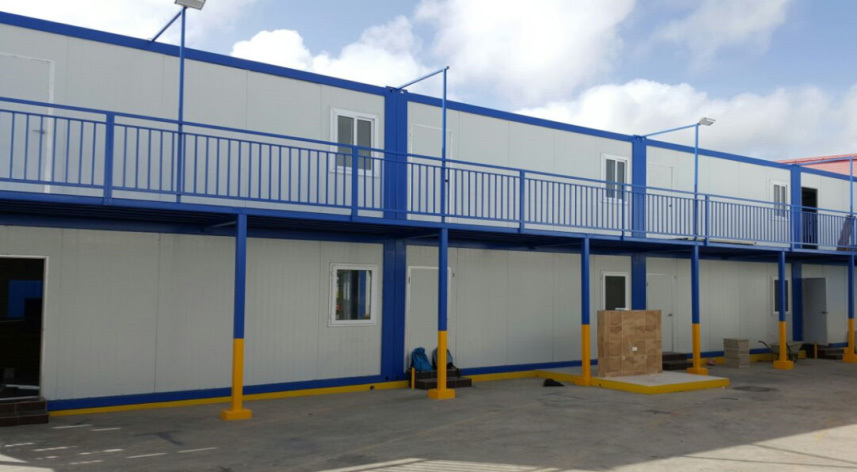Advanced Steel House Construction: An In-Depth Exploration of Innovative Design Options
Jul 27,2025

Advanced Steel House Construction: An In-Depth Exploration of Innovative Design Options
As the demand for sustainable and efficient building practices continues to rise, **advanced steel house construction** has emerged as a leading choice for architects and homeowners alike. This comprehensive guide explores the various design choices available within this innovative construction method, shedding light on the advantages, challenges, and future prospects of steel structures in residential building. Join us as we delve into the nuances of steel construction, offering insights that will help you make informed decisions about your next building project.
Table of Contents
- 1. Introduction to Advanced Steel House Construction
- 2. Benefits of Steel Construction
- 3. Design Choices in Steel Houses
- 4. Challenges of Steel House Construction
- 5. Cost Analysis of Steel Building
- 6. The Future of Steel Construction
- 7. FAQs
- 8. Conclusion
1. Introduction to Advanced Steel House Construction
The concept of **advanced steel house construction** revolves around utilizing steel as a primary material for framing and structural support. This method combines innovative engineering techniques with modern design aesthetics, creating homes that are not only beautiful but also highly functional. The use of steel in residential construction has gained traction due to its unmatched strength-to-weight ratio and longevity, making it an ideal choice for a variety of architectural styles.
In this guide, we will explore the myriad advantages of steel construction, the design choices available to homeowners and builders, as well as the challenges that may arise. By understanding the full scope of advanced steel house construction, readers can make more informed decisions about their building projects.
2. Benefits of Steel Construction
2.1 Durability and Strength
One of the most significant advantages of using steel in construction is its **durability**. Steel structures can withstand extreme weather conditions, including heavy winds, heavy snow loads, and seismic activity. Unlike traditional wood framing, steel is not susceptible to rot, pests, or warping, ensuring that a steel house remains structurally sound for decades.
Moreover, the strength of steel allows for larger spans and open-plan designs, providing flexibility in layout and functionality. Homeowners can achieve expansive living spaces, high ceilings, and large windows, enhancing the overall aesthetic appeal of their homes.
2.2 Design Flexibility
When it comes to design, steel offers **unparalleled flexibility**. Architects have the freedom to create unique shapes and styles, from contemporary to traditional designs. The ability to integrate steel with other materials, such as glass and concrete, further enhances design possibilities, allowing for innovative architectural features and eye-catching facades.
Steel's lightweight nature also permits easy transportation and assembly, reducing the overall construction timeline. This efficiency is particularly beneficial in areas with limited access or challenging terrain, where traditional materials may pose logistical challenges.
2.3 Sustainability Practices
In an era where sustainability is paramount, **advanced steel house construction** stands out for its eco-friendliness. Steel is 100% recyclable, meaning that it can be repurposed at the end of its life cycle without losing quality. This reduces landfill waste and minimizes the environmental impact of construction projects.
Additionally, the energy efficiency of steel buildings is noteworthy. Proper insulation and modern design practices can lead to significant reductions in heating and cooling costs. Homeowners benefit from lower utility bills while contributing to a more sustainable future.
3. Design Choices in Steel Houses
3.1 Structural Design Options
Advanced steel houses can be designed using various structural systems, each offering distinct benefits. Common options include:
- Steel Frame Construction: This method uses vertical steel columns and horizontal beams to create the framework of the house. It provides excellent load-bearing capabilities and allows for expansive open spaces.
- Steel Stud Framing: Utilizing steel studs instead of wooden ones, this method is ideal for interior walls and non-load-bearing structures. It’s lightweight and reduces material waste.
- Steel Trusses: Trusses are used to support roofs and can span large distances, making them suitable for unique architectural designs.
3.2 Aesthetic Design Choices
Aesthetically, steel can be combined with different materials to create stunning visuals. Key design elements include:
- Exposed Steel Beams: Leaving steel beams exposed adds an industrial charm to the interior, blending modernity with rustic elements.
- Glass Facades: Pairing steel with glass creates a seamless transition between indoor and outdoor spaces, enhancing natural light.
- Paint and Finishes: Steel can be coated with a variety of finishes, allowing for customization in color and texture, fitting any design vision.
3.3 Modular Steel Construction
Modular steel construction is an innovative approach that involves prefabricating sections of a house in a factory setting. These modules are then transported to the building site for assembly. This method offers several advantages:
- Time Efficiency: Reduced on-site construction time leads to faster project completion.
- Quality Control: Factory settings allow for better quality assurance and reduced waste.
- Cost Savings: Overall project costs can be lowered due to reduced labor and material waste.
4. Challenges of Steel House Construction
While advanced steel house construction offers numerous benefits, it also comes with its set of challenges. Understanding these challenges can help homeowners and builders prepare effectively:
- Initial Costs: The upfront costs of steel materials can be higher compared to traditional materials, potentially making initial investment daunting.
- Thermal Conductivity: Steel is a poor insulator compared to wood, which can lead to increased heating and cooling costs if not properly insulated.
- Corrosion: Without proper coatings and maintenance, steel can be susceptible to rust, particularly in coastal or humid environments.
5. Cost Analysis of Steel Building
The overall cost of building a steel house can vary significantly based on several factors, including design complexity, materials used, and the region of construction. A cost analysis typically includes:
- Material Costs: Steel prices fluctuate on the market, impacting overall budgets.
- Labor Costs: While steel structures can be quicker to assemble, specialized labor may be required, influencing labor costs.
- Design Fees: Hiring architects or engineers familiar with steel construction may incur additional fees, though they can help optimize designs for cost efficiency.
- Long-term Savings: Consideration should be given to long-term savings from reduced maintenance and energy efficiency, which can offset initial construction costs over time.
6. The Future of Steel Construction
As technology continues to advance, the future of steel construction looks promising. Innovations such as smart steel technologies, which incorporate sensors and automation, are beginning to reshape how buildings are designed and maintained. Additionally, advancements in steel production methods are leading to lower environmental footprints, aligning with global sustainability goals.
Moreover, the expanding market for custom and modular steel construction is making it easier for homeowners to realize their dream homes without compromising on design or sustainability. As the construction industry embraces these trends, advanced steel house construction will likely become an increasingly popular choice for homeowners and builders alike.
7. FAQs
What are the primary benefits of steel house construction?
Steel house construction offers durability, design flexibility, and sustainability, making it an attractive option for modern homes.
Is steel construction more expensive than traditional methods?
While initial costs may be higher, the long-term savings from reduced maintenance and energy efficiency can offset these expenses.
How does steel compare to wood in terms of strength?
Steel has a significantly higher strength-to-weight ratio than wood, allowing for larger spans and open spaces in building design.
What are the environmental benefits of steel construction?
Steel is 100% recyclable, reduces waste, and can be designed for energy efficiency, contributing to sustainable building practices.
Can steel houses be customized?
Absolutely! Steel houses offer extensive customization options, allowing homeowners to achieve their desired aesthetics and functional layouts.
8. Conclusion
In conclusion, **advanced steel house construction** represents a forward-thinking approach to building that harmonizes strength, sustainability, and aesthetic appeal. As we have explored, the benefits of durability, design flexibility, and eco-friendliness make steel an excellent choice for modern homes. While challenges exist, they can be managed with proper planning and expertise. With the future of steel construction looking bright, now is an opportune time for homeowners and builders to embrace this innovative method and create beautiful, lasting structures that contribute to sustainable living.
PREVIOUS:
Contact Us
E-mail :
183597530@qq.com
WhatsApp:
+86-13810577811
Address:
No. 4 Fengzhi Road, Binhe New District, Baotou Rare Earth High tech Zone, Inner Mongolia Autonomous Region









